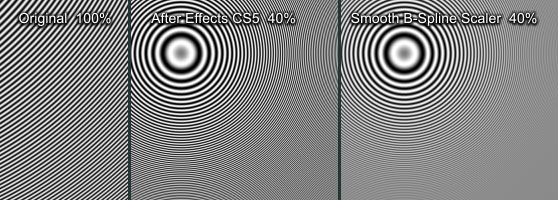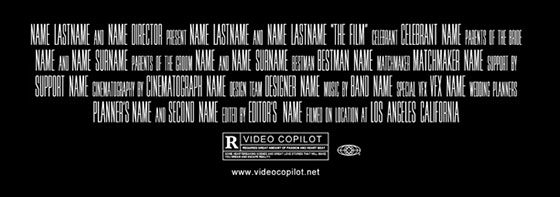
Here’s the last bunch of news from September in assorted After Effects tutorials, tips, and scripts & plug-ins new and old. You can catch other recent AE roundup at After Effects Lately #1 and After Effects Lately #2.
FilmConvert is a stand-alone film look application and a new plug-in for After Effects, Premiere, Final Cut Pro, and Motion. Vincent Laforet is a supporter and says it’s used to recreate “the look of grain structure, color curves, and printer spectral responses from a variety of pre-existing stocks from Kodak to FujiFilm. …But this is no ordinary “film-look” plugin. Rubber Monkey, who developed the software, recorded various color charts on different stocks of film and then mapped the qualities of various HD sensors to those charts, which is an incredibly important distinction that separates it from many of the other plugins out there.”
In After Effects: Copy and Paste Shortcuts on Motionworks, guest host Travis Wade “demonstrates some must-know shortcuts for copying and pasting.”
Create A Realistic Handwritten “Write-on” Using Expressions, by Jorrit Schulte, takes “a look at using Time Remap to create a procedural animation based on the direction of a path. The goal is to make a Write-on animation look more natural by having the wrist angle change to mimic movements of real writing instead of it being completely static.”
Dan Stevers posted Mechanically-Built, showing “how to do a killer mechanical type transition in After Effects.” The time spent on the wipe is short and the process of building the wipe source with Trapcode Particular is not mentioned, though other enhancements are discussed. Here’s Dan, and a video by Dennis Radeke on building gradients for gradient wipes, Episode 23 – Using Gradient wipes for new transitions. Note that you can also stroke a gradient onto a path in a variety of ways.
In Logo Removal in After Effects Tutorial, Jordan Shipman demonstrates a “simple technique to remove logos from video using some motion tracking and the paint or clone stamp tool.”
Robert Seidel noted some interesting Pixel Bender plug-ins from Kati Haapamäki, for example Smooth B-Spline Scaler. Unfortunately Pixel Bender filters are no longer supported, but they are supported in previous versions of AE, and could be made native if there’s enough interest.
Knock your Block Out! by Andrew Kramer offers a free font called “Credit Block” and a template to create those “strange looking blocks of text seen in movie trailers.”
Mettle wants you to Get Inspired with Free Project Files for their various plug-ins. Here’s a sample:
Angie Taylor (recently interviewed by Motionworks) has some free presets for Sapphire Edge, Textonomy for Sapphire Edge. Presets are a big new feature for Genarts plug-in products, as seen in What’s new in Sapphire 6.1 below.
Brent Pierce at Cineblur posted a Free After Effects Preset: Pendulum.
Bucky Roberts of The New Boston finished 39 video tutorials on the basics of After Effects. Here’s After Effects Tutorial – 36 – Built in Presets:
Kevin P. McAuliffe‘s AE tutorial series “You Ask, I Answer” just added Adjusting AE Templates To Make Them Loop.
In another basics series, “After Effects From The Ground Up,” Kevin recently added 3D Camera Tracking in After Effects in 2 parts (#2) and Using Paths in After Effects.
Creating an Asteroid Field & Planet Using Element 3D by VinhSon Nguyen creates a “3D asteroid field using After Effects and Element 3D from Video Copilot. We’ll also take a look at lighting the scene, building the planet, and creating an atmosphere.” Here’s the preview:
In CinemaDNG in After Effects CS6 (and elsewhere), Todd Kopriva explains that while discontinued on Adobe Labs, the CinemaDNG format is an open format with development continued elsewhere. It’s just not developed enough for performance for Premiere Pro, but can be used inside Photoshop and After Effects. There have been hints that Adobe may develop a codec along the lines of DNxHD or ProRes, which would be great since, at best, CinemaDNG could take years to fully develop. Here’s a demo of new corection and transcoding software by Roald Christesen, Cinema DNG Transcoding – Example Session:
Comparing Waveforms and the Spectral Display from “Introduction to Adobe Audition CS6: Learn by Video” by Maxim Jago may explain some mysteries that might come in handy on noise reduction. Related is a series of 4 videos on cleanup in Audition by the busy Clay Asbury for SpliceVine; here’s part 1 of Cleaning up audio in Adobe Audition.
Digital Rebellion, makers of Post Haste, Pro Maintenance Tools, and other utilities for mobile and desktop on various platforms, runs a weekly collection of Bugs of the Week, covering bugs in major editing apps. Bugs of the Week – 9-29-12 notes that Adobe released updates for a security issue on Windows (all users have CS6 updates from earlier this month).
MoChat 13 Transcript & Summary highlights and details a chat of “round-tripping between various apps. The most common transitions seem to be PS/AI>AE, C4D>AE, AE>NLE.”
Adobe’s Karl Soule discussed Edit Original – a “long lost” feature for Premiere Pro / After Effects workflows, for when RAM preview and proxies won’t do for Dynamic Link functions (more Help).
Maxim Jago talks about Dynamic Link and larger issues in his new video2brain course, Video Production with Creative Suite 6: Advanced Creative Workflows Made Simple. Here’s Maxim on Sending Work from Premiere Pro to After Effects:
Lynda.com posted Trapcode Particular Essential Training with Chad Perkins, who thinks it’s his best training set yet. Here’s sample from Chad, and one from Harry Frank’s older set, Complete Training for Trapcode Particular 2:
Please note that these roundups are for quick review and comparison. There is almost always vital information from the originating authors at the links provided-and often free presets, projects, or stock footage too.

Filmtools
Filmmakers go-to destination for pre-production, production & post production equipment!
Shop Now















